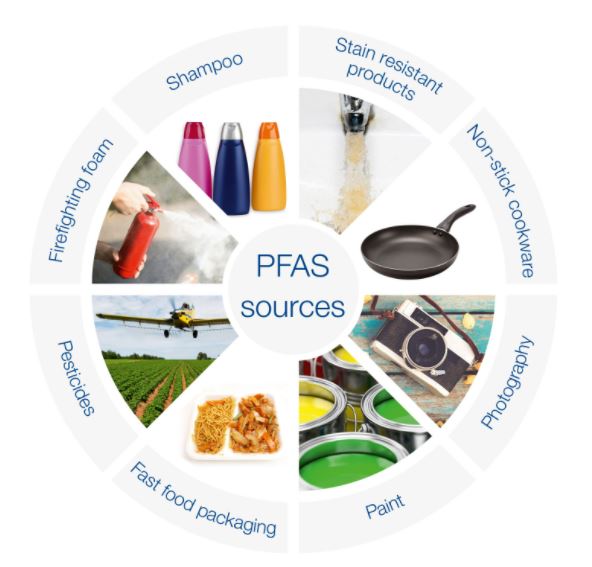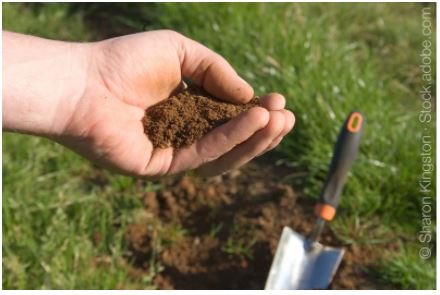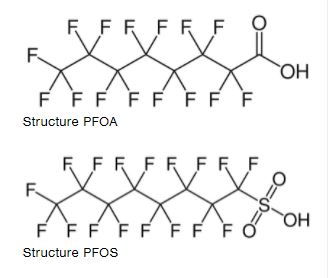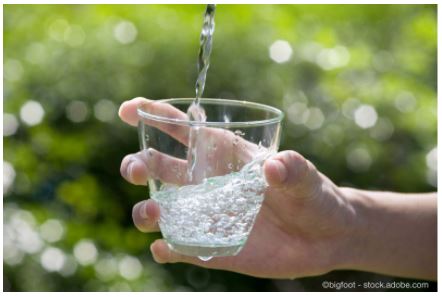
What you need to know about PFAS and PFAS analysis
More than 4730 compounds(1) belong to the group of PFAS (which stands for per- and polyfluoroalkyl substances) that have been produced since the 1940s. Since these compounds do not originate from nature, the global pollution is the result of human activity. All PFAS are of anthropogenic origin. PFAS are "forever chemicals", chemicals that are very persistent in the environment and in the human body.
General structure of perand polyfluoroalkyl substances (PFAS)
PFAS are organic compounds with a carbon chain in which hydrogen is substituted by fluorine. The carbon-fluorine bond is very strong which makes them “virtually indestructable“. The molecular structure of the PFAS provides them with non-sticky and tensid-like characteristics (because of their hydrophobic, lipophobic chain + hydrophilic head).
There are polymers and non-polymers. Typical polymers are fluoropolymers, side-chain flurorinated polymers and perfluoropolyethers. Typical non-polymers are perfluoroalkyl acids (PFFFAs), perfluroalkane sulfonyl fluorides (PASF), perfluroalkyl iodides (PFAIs) and per- and polyfluroalkyl ether (PFPEs) based derivatives(2).
Perfluorooctanoic acid (PFOA) and perfluorooctanesulfonic acid (PFOS) have been the most produced and studied of these chemicals.
To cut a long story short: there are many different substance groups that need to be analyzed!

Where are PFAS used?
They are commonly used because of their non-sticky and tensid-like properties for various purposes:
- Textiles, textile coating, e.g., seat covers, carpets, outdoor clothing
- Fire extinguisher foams
- Food packaging, e.g., pizza cartons, paper cups
- Paper finishing
- Fibre coating
- Cookware
- Building material, e.g., water resistant lacquer
- Further consumer products, such as: furniture, polishing and cleaning agents and creams
How do PFAS find their way into the environment and the human body?
Per- and polyfluoroalkyl substances (PFAS) have been manufactured for more than 80 years, but health effects were neglected for a long time. In September 2020, the European Food Safety Authority (EFSA) published a new health risk assessment related to the presence of PFAS in food(3). This is the first EFSA expert opinion in which, in addition to PFOA and PFOS, other PFAS were also included in the exposure assessment and health risk assessment.
PFAS are emitted into the environment by different pathways. For example, exhaust air from industrial sources can contain PFAS and thus are dispersed into nearby ground and water bodies. Rain and snow, for example, can eventually carry them from the air into the soil and surface waters. Particle accumulation can even cause them to travel long distances through the air. PFAS are therefore also found far from industrial production sites and human living areas, such as in sediments from the Bering Sea to the Arctic(4/5). Through volatilization from products (evaporation from carpets or home textiles treated with soil-repellent agents) or from waterproofing sprays, indoor air can also be contaminated.
Soils can also be directly contaminated, for example by firefighting foams. With the uptake of PFAS from contaminated soils and waters in vegetation and their accumulation in fish, these substances enter the human food chain. Consequently, humans absorb PFASs from the environment through food, water or air.
These "forever chemicals" also find their way into wastewater treatment facilities from household sources. They then enter surface waters via treated wastewater or remain in sewage sludge. The sewage sludge, in turn, can be used as fertilizer in agriculture, and then over time these chemicals eventually leach into the groundwater. Once there, some of the precursor compounds are transformed into the persistent PFAS.
The new special phase – CHROMABOND PFAS
Over the years many different PFAS were developed. Now, they are found in the environment (water, food, soil, animals and humans) and their problematic health effects come into play.
The challenge is that current analytical methods are limited.
To tackle this challenge, Macherey-Nagel has developed a special phase for the enrichment of a broad range of PFAS which provides good reproducibility and high recovery rates.
This is possible due to the different interactions the sorbent combination offers. These interactions are recommended by DIN 38407-42, EPA 537.1 and 533 guidelines.
Our CHROMABOND PFAS is a polymer-based combination phase which contains a weak anion exchange functionality. The combination of different SPE phases makes it possible to use various interactions (dipole-dipole, ionic, hydrophobic, H-bond).
CHROMABOND PFAS provides several advantages
- Solution for various PFAS substance classes
- > 28 PFAS can be enriched
- Sorbent retention mechanisms according to DIN 38407-42, EPA 537.1 and 533 guidelines
- High capacity
- High recovery rates
PFAS In Water
This application note shows the reliable and successful determination of per- and polyfluoroalkyl substances (PFAS) from drinking water with an optimized SPE method. By using CHROMABOND PFAS it is possible to achieve high recovery rates for PFAS from drinking water with good reproducibility. By the combination of different SPE sorbents in a multi-layer column it is possible to use various interaction types like ionic, hydrophobic, hydrogen bonds and dipole-dipole for the enrichment of a broad spectrum of PFAS. In this way, a SPE method could be developed with the strength of several directives EPA 537.1, EPA 533 and DIN 38407‑42.
PFAS From Textiles
This application note describes the determination of per- and polyfluoroalkyl substances (PFAS) from contaminated clothing. It demonstrates the extraction of PFAS from clothing samples using CHROMABOND PFAS column, a special SPE combination phase. The eluates are finally analyzed by HPLC-MS/MS.
PFAS In Contaminated Soil, sediments

This application note describes the determination of per- and polyfluoroalkyl substances (PFAS) from contaminated soils. It demonstrates the extraction of PFAS from soil samples using CHROMABOND PFAS column, a special SPE combination phase, for the methodology described in DIN 38407‑42. The eluates are finally analyzed by HPLC-MS / MS.
CONTACT US
Tel: +44 (0) 151 649 4000
Email: marketing@greyhoundchrom.com
FOLLOW US
YOU MAY ALSO BE INTERESTED IN OUR NEWSLETTER



















